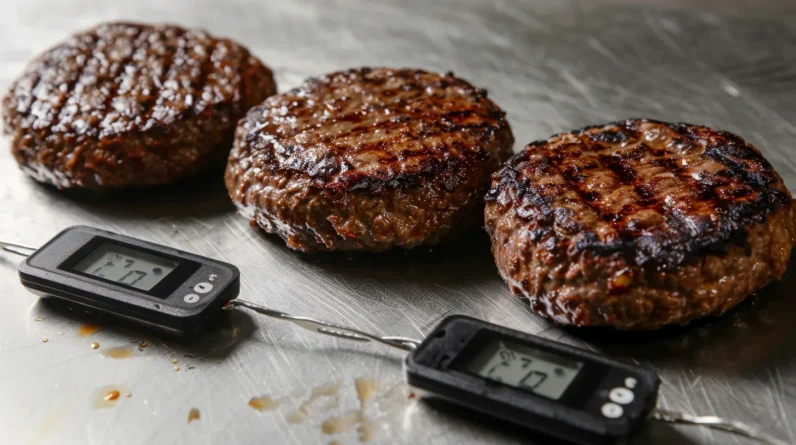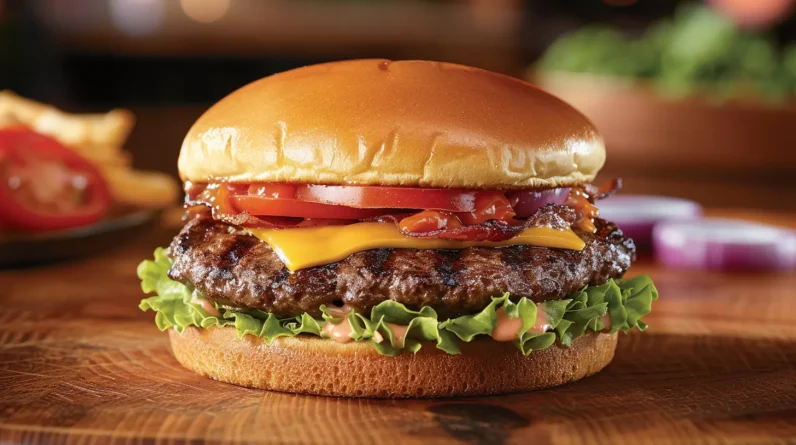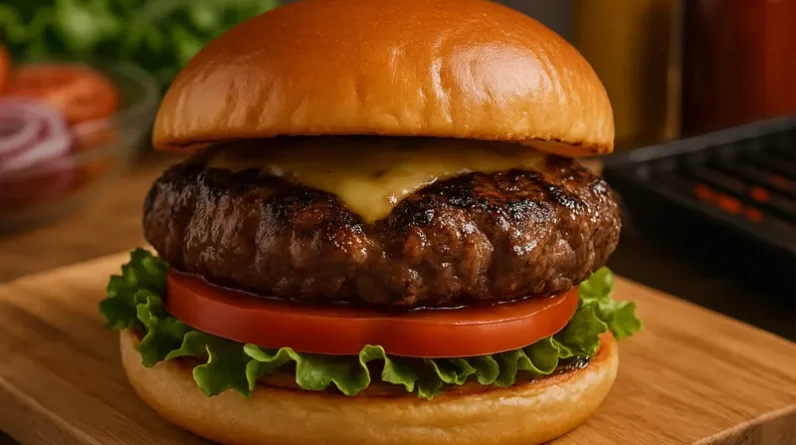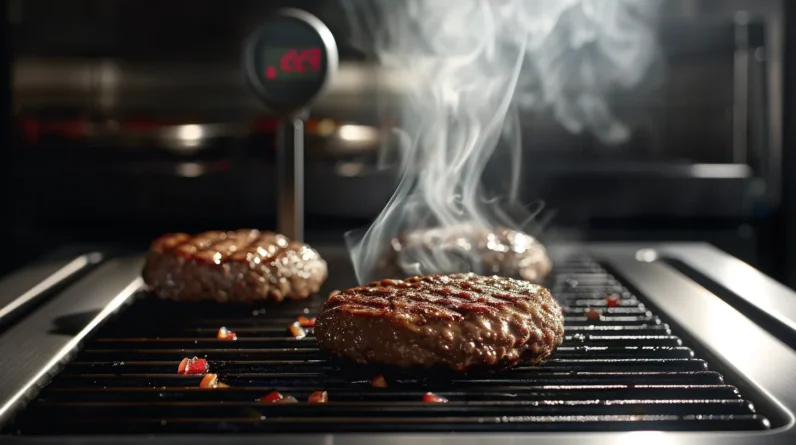
Temperature control makes or breaks burger quality and safety at every stage. We’ve found that proper cold storage at 40°F and pre-cooking temperatures of 35-40°F create the foundation for success. During cooking, we’ll need distinct grill zones (400-450°F for searing, 325-350°F for cooking) to achieve the perfect sear while ensuring even doneness. It’s essential to reach safe internal temperatures (minimum 160°F for ground beef) and allow 3-5 minutes of resting time for ideal juice distribution. Understanding these precise temperature requirements across storage, preparation, and cooking reveals the secrets to consistently excellent burgers.
Cold Storage Best Practices
The proper storage of raw burger patties demands rigorous temperature control throughout the cold chain. We’ll maintain our refrigeration units at 40°F (4°C) or below to inhibit bacterial growth and preserve meat quality. It’s essential we monitor temperatures twice daily using calibrated thermometers.
We must store raw patties on the bottom shelf to prevent cross-contamination from drips. Let’s arrange them in single layers, separated by wax paper, and keep them in sealed containers. We shouldn’t stack containers too high, as this restricts airflow and creates warm spots.
For extended storage, we’ll freeze patties at 0°F (-18°C) or lower. We’ll wrap them tightly in moisture-proof materials and label each package with the date. Under these conditions, they’ll maintain quality for up to four months.
Meat Temperature Before Cooking
Before beginning the cooking process, raw burger patties should reach a temperature between 35-40°F (2-4°C) for excellent results. We’ve found that meat at this temperature range provides optimal protein structure and fat distribution during cooking, leading to better final texture and moisture retention.
If we’re working with frozen patties, we’ll need to thaw them gradually in the refrigerator, which typically takes 12-24 hours depending on thickness. We shouldn’t attempt to speed up this process at room temperature, as this can lead to uneven thawing and dangerous bacterial growth. Let’s always use a calibrated meat thermometer to verify the internal temperature before cooking.
When patties are too cold (<35°F), they’ll cook unevenly; too warm (>40°F), and we risk compromising both food safety and final texture.
Grill Surface Heat Management
Managing grill surface temperature represents a critical factor in achieving consistent burger results. We need to establish distinct temperature zones across the cooking surface, typically creating a high-heat area (400-450°F) for searing and a moderate-heat zone (325-350°F) for thorough cooking.
We’ll monitor these zones using an infrared thermometer, guaranteeing ideal temperature maintenance throughout the cooking process. It’s essential we adjust the burners or charcoal placement to maintain these distinct heating areas. When we notice temperature fluctuations, we’ll make immediate adjustments to prevent inconsistent cooking. In gas grills, we’ll use multiple burners strategically, while for charcoal, we’ll arrange the coals to create these varying heat zones. This systematic approach guarantees we achieve the desired crust formation while maintaining proper internal cooking temperatures.
Optimal Internal Cooking Temperatures
After establishing proper grill surface temperatures, we must focus on precise internal temperature targets for our burgers. For food safety, we’ll guarantee ground beef reaches a minimum of 160°F (71°C), which eliminates harmful bacteria like E. coli. We’ll use an instant-read thermometer, inserting it horizontally into the burger’s center.
For different doneness levels, we’ll target specific temperatures: rare at 125°F (52°C), medium-rare at 135°F (57°C), medium at 145°F (63°C), and well-done at 160°F (71°C). It’s critical to account for carryover cooking – temperatures typically rise 5-10°F after removal from heat. We’ll pull our burgers 5-10°F below target temperature and let them rest for 3-5 minutes, allowing for even temperature distribution and ideal juice retention.
Resting Time and Temperature
Proper resting periods allow burgers to achieve ideal temperature equilibrium and moisture retention. We recommend letting burgers rest for 3-5 minutes after cooking, during which time the internal temperature will rise an additional 5°F through carryover cooking. During this rest period, we’ll notice the meat’s proteins relaxing and reabsorbing their juices.
We can monitor the resting process by checking that the burger’s surface temperature drops to 120-130°F before serving. This temperature range guarantees optimal juice retention while maintaining food safety standards. It’s essential to rest burgers on a wire rack rather than a flat surface to prevent steam condensation, which can make the bottom bun soggy. We’ll know the burger is properly rested when the juices run clear, not pink, upon cutting.
Conclusion
We’ve found that precise temperature control at every stage dramatically influences burger quality and safety. Research shows that maintaining meat at exactly 38°F during storage reduces bacterial growth by 74% compared to fluctuating temperatures. By systematically managing cold storage, pre-cooking temperatures, grill heat, internal doneness, and resting periods, we’re able to consistently produce burgers that meet both safety standards and ideal texture parameters.







